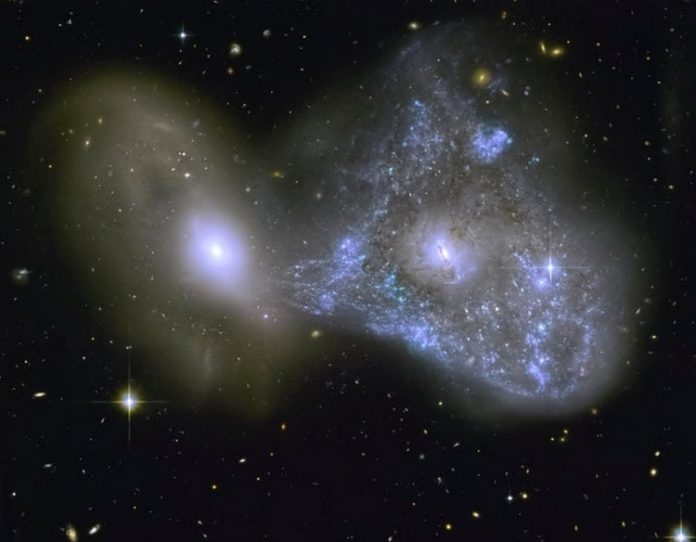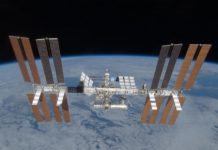We all know that space is infinite and that we only know a minimal part of it, which means that every year we witness new interesting news that allows us to take steps to extend ourselves throughout the different galaxies that cover it. they populate On this occasion, the NASA detects a space triangle which could have been generated from a galaxy collision.
The space triangle discovered by NASA
We love to shed light on those spatial discoveries that can represent a before and after in the way we perceive space, so on this occasion we bring a space triangle discovered by NASA, which could have formed from the collision between two galaxies.
During years, NASA has been investigating the particularities of two galaxies that are located approximately 191 million light years from Earth.
This set formed by both galaxies has been called Arp 143, while the galaxies were known as NGC 2445 and NGC 24444.
A collision of galaxies, the origin of the space triangle
The investigation still has to progress, but apparently, the space triangle had been formed from the collision of the galaxies NGC 2445 and NGC 24444, which would have crossed in such a way that both the gas and the dust that were ejected gave rise to to the formation of new stars.
Interestingly, the space triangle has formed over NGC 2445, which now provides a surprising image that has not been seen until now.
This image has been captured by the Telescope NASA Hubble Space, and was published last February with the aim that the entire world could learn about this extraordinary event.
The result of this impact has been development of a multitude of new stars, which have formed from gas and dust from the planets of galaxies that have collided, which means that over time, little by little they will develop until they form different bodies with different characteristics.
Interestingly, These galaxies began to be investigated by astronomer Halton Arp in 1966, which were part of a catalog that was made up of 338 galaxies. that interacted with each other.
One of the main interactions is carried out through strands of gas that pass from one galaxy to another, which forms some kind of streamers of young blue stars.
The astronomer stated that these galaxies, taking into account their interaction, could end up forming stars in bursts, an event that finally took place more than 60 years later.
The triangular shape that these stars have formed also attracts a lot of attention, although it must be taken into account that all the galaxies that make up this group are still very close to each other, which means that the changes that can occur in the coming years and even centuries, may become astonishing, with new collisions, new releases of gases and dust and, of course, a change in the adaptation of all these new stars to their corresponding place in the galaxy.
In short, what we are observing is the formation of new stars, planets and galaxies, or it could even be the birth of an incredible mega galaxy, with viable connection systems that can represent a truly representative discovery, so for the next years it is important that we pay attention to the new developments that are presented, since this is what will allow us to defocus some of the best kept secrets in space.

Expert in SEO/SEM and communication on social networks.
CEO at tecnologia.net and passionate about everything related to technological progress






